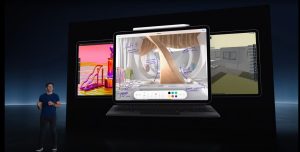Apple’s Vision Pro, the tech giant’s much-anticipated foray into virtual reality, has reportedly seen a significant cut in production due to lower-than-expected demand. While some might see this as a setback, I believe it could be a blessing in disguise for both Apple and the VR industry as a whole.
The Hype vs. Reality
When a behemoth like Apple enters a new product category, expectations naturally run high. Many assumed the Vision Pro would do for VR what the iPhone did for smartphones – take it mainstream in a big way. But the reality is, VR still faces significant barriers to wide adoption. As one article put it, “The Vision Pro is Apple’s Field of Dreams device for virtual reality… Apple had to build it so there’s a platform for people to download apps from.”
However, at $3,500, it’s priced more like a high-end dev kit than a mass-market product. The “build it and they will come” approach that worked for the iPhone may not be as straightforward this time around.
Room to Grow
And that’s where the silver lining comes in. With less pressure to immediately deliver iPhone-level sales, Apple has more breathing room to iterate and improve on the Vision Pro’s shortcomings. The articles note issues like its heavy weight, uncomfortable fit during long sessions, and a lack of killer apps – all things that could be addressed in future versions.
Think of it like the original iPhone. It was groundbreaking, but far from perfect. No App Store, no 3G, no copy/paste. But because it wasn’t under intense scrutiny to be an overnight mega-hit, Apple could refine the product year after year until it became the industry-defining device we know today. The same could hold true for the Vision Pro.
A Rising Tide Lifts All Boats
Apple taking a patient, long-term approach to VR could also benefit the industry as a whole. As one writer astutely noted, “Even in its infancy, the Vision Pro brings enough to compel hundreds of thousands of people (or developers) to buy a device that doesn’t make much practical sense.”
By getting its headset out there, even in limited quantities, Apple is planting a flag and giving developers a high-end platform to experiment with. If Apple can use this early adopter phase to identify and enable compelling use cases, it could pave the way for broader VR adoption down the line – not just for Vision Pro, but for other headsets as well.
Ultimately, virtual reality is a marathon, not a sprint. While the Vision Pro’s slow start might not fit the typical script for an Apple product launch, it could prove to be a valuable opportunity for the company to fine-tune its offering and lay the groundwork for VR’s future, free from the crushing weight of unrealistic expectations.
If Apple can use this time wisely, the Vision Pro’s muted debut could one day be seen as a crucial step on the path to making VR the game-changing, mass-market technology we all believe it can be. As the saying goes, “The journey of a thousand miles begins with a single step” – even if that first step is a bit wobbly.




